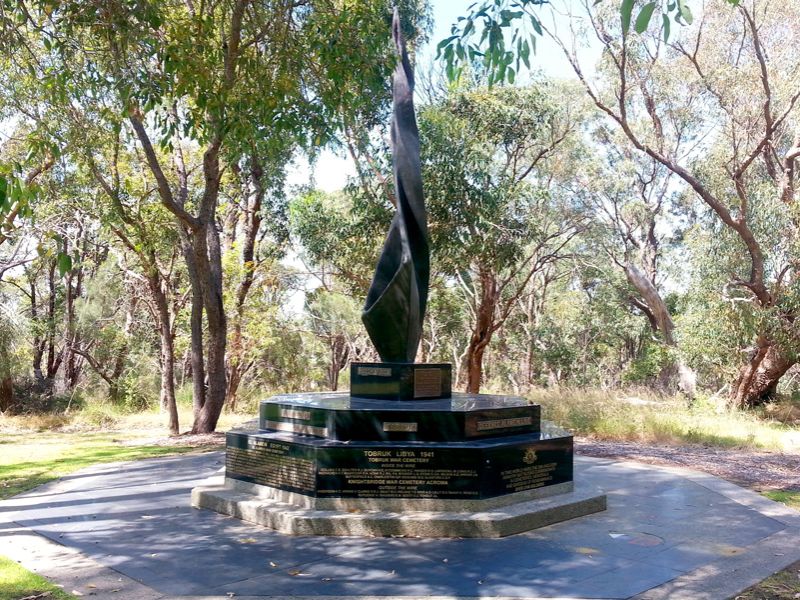Private Archie Graham Male, 2/28th Australian Infantry Battalion
Archie “Graham” Male was born on 29 August 1911 in Dorset, England, to Archie and Anna Flora Male.
The Male family moved to Broome, Western Australia in 1898. Graham’s father and uncle had a pearling business and were prominent in the Broome business community. Archie senior was Mayor of Broome 1915-1918, while his brother Arthur became an MLA.
In 1922, Archie senior died and the family moved to Perth. Graham attended Hale School Perth and Geelong Grammar, before working at the Commonwealth Bank at Claremont.
On 29 April 1941, Graham enlisted in the Second Australian Imperial Force, and in September, was sent to the Middle East with the 2/28th Battalion.
Throughout early 1942, the Battalion served in a garrison role in Syria and Lebanon, part of the Allied occupation force in the aftermath of the Syria–Lebanon campaign.
In late April and May, Graham was in hospital with hip problems and sciatica but returned to his unit by the middle of the year, when German and Italian forces began advancing towards Egypt. The 9th Division, including the 2/28th Battalion, took positions near El Alamein in Egypt’s Western Desert.
At midnight on 27 July 1942, the 2/28th attacked Ruin Ridge. Despite early progress, poor planning and lack of support saw the battalion in danger of being surrounded. British tanks attempted to relieve the battalion after 22 vehicles were “knocked out”, and by 10am, enemy tanks were moving in from three directions.
Surrender was inevitable. The Australians were rounded up and marched through the British artillery barrage, resulting in more casualties, as they moved behind the German lines.
Sixty-five officers and were killed or wounded; nearly 500 became prisoners of war (POW).
Initially reported as missing, Graham Male was later confirmed as a POW.
On 16 August 1942, two Italian cargo ships, Nino Bixio and Sestriere, embarked several thousand POWs from the North African Campaign at Benghazi in Libya. Divided alphabetically, A–L were aboard Sestriere and the remaining 3,200 prisoners, including Private Male, boarded Nino Bixio.
The ships sailed for Brindisi in Italy, escorted by two destroyers and two torpedo boats.
The British submarine HMS Turbulent sailed to intercept the convoy, not realising that it carried prisoners of war. On the afternoon of 17 August, the Turbulent fired four torpedoes at the cargo ships before diving deep to evade counter-attack.
One torpedo suffered a gyroscope fault and went in circles, passing above the submerged submarine three times. The three other torpedoes hit Nino Bixio. One exploded in her No. 1 Hold, another in the engine room, the third did not explode but grazed her rudder badly enough to disable steering. Nino Bixio settled in the water but her bulkheads held and she remained afloat.
The attack killed 336 Allied prisoners, New Zealanders, Britons, South Africans and Australians, including Private Male.
He was 30 years old.
Archie Graham Male had no grave but the sea, and today he is commemorated on the Alamein Memorial.
Duncan Beard, Editor, Military History Section
- Australian War Memorial https://www.awm.gov.au/collection/AWM2019.1.1.114

 Australian War Memorial
Australian War Memorial